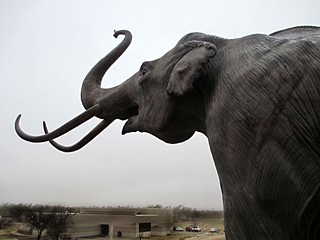Day Trips
Archaeology site in Lubbock uncovers mysteries of the past
By Gerald E. McLeod, Fri., Aug. 2, 2013
Lubbock Lake National Historic Landmark on the edge of Lubbock holds the record of human history. For more than 75 years it has been an active archaeology site, as scientists uncover the mysteries locked into layers of dirt.
Centuries ago, what we know as the High Plains was a much wetter place. Yellow House Draw, an intermittent tributary to the Brazos River, was fed by ancient springs. Occupation of the site continued from the Paleo-Indians until 1881, when George Singer built a trading post in a grove of trees that became the beginnings of Lubbock.
After the springs dried in the Thirties, the city tried unsuccessfully to dredge a lake in the shallow valley. What they found instead of a water source was the only site in North America with a complete record of 12,000 years of humans, plants, and animals in a single place.
Since 1939, the site has been an active archaeological site for scientists from the Museum of Texas Tech University. The university museum also has a satellite museum at the preserve that illustrates the history of the site. Trails meander through the treeless draw with signs identifying the native plants.
Lubbock Lake National Historic Landmark is near the intersection of the Clovis Highway and Loop 289 in northwest Lubbock. The preserve is open Tuesday through Saturday, 9am to 5pm, and Sunday from 1 to 5pm. For information, go to www.depts.ttu.edu/museumttu/lll or call 806/742-1116.
1,148th in a series. Collect them all. Day Trips, Vol. 2, a book of "Day Trips," is available for $8.95, plus $3.05 for shipping, handling, and tax. Mail to: Day Trips, PO Box 33284, South Austin, TX 78704.









